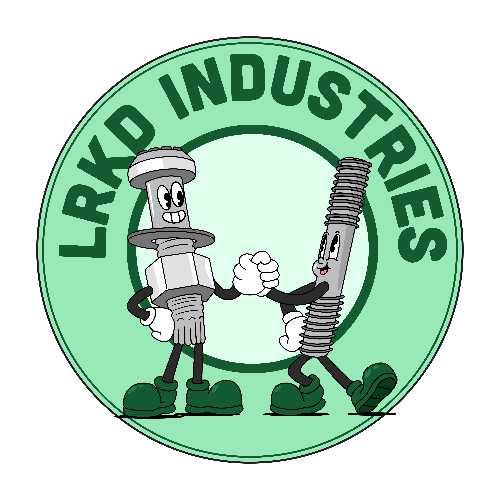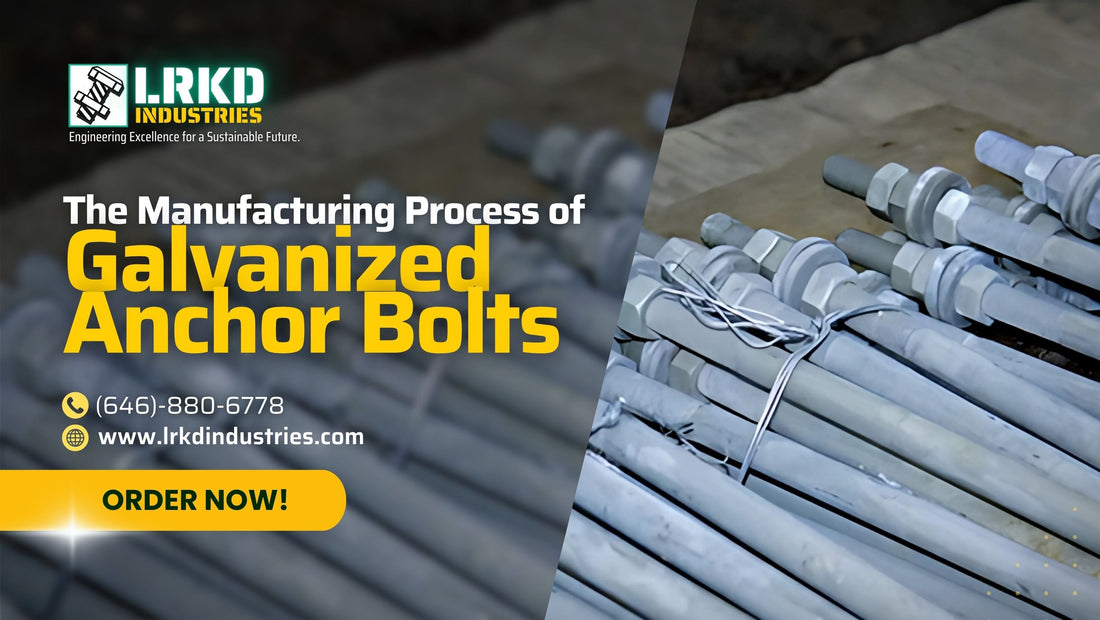Ever ponder the forces that securely anchor skyscrapers, bridges, and enormous industrial structures? The solution is found below the surface: galvanized anchor bolts. These crucial elements provide structural stability by fastening infrastructure, steel columns, and large machines to concrete foundations. However, what is the process of making these bolts and why is galvanization important? Let's simplify and make sense of the galvanized anchor bolt manufacturing process step-by-step.
1. Material Selection and Cutting
Choosing the Right Steel
The steel mill is where a galvanized anchor bolt's journey starts. Based on the bolt's intended use, engineers choose the right quality, size, and configuration. High-strength steel rods, the basic material, are carefully chosen to satisfy certain specifications and are available in lengths ranging from 20 to 40 feet.
Cutting to Size
Once the raw material is ready, it must be cut to the required length. Two primary cutting methods are used:
Shearing: Works like a guillotine, efficiently slicing through the steel. However, shearing is typically limited to diameters of up to 2 inches and lengths of about 100 inches.
Band Saw Cutting: Uses a saw blade with teeth to precisely cut through steel, with virtually no limitations in length or diameter.
2. Threading
All galvanized anchor bolts must have a threaded end to allow for secure fastening. Two main threading methods exist:
Cut Threads: Created by chasers that remove steel from the round bar, forming threads.
Rolled Threads: Formed through an extrusion process where two dies displace the steel to create strong, uniform threads.
For extra security, some straight anchor rods also have threading on the embedded end, often paired with nuts or plates to prevent pull-out.
3. Heading
Some anchor bolts require a forged head for additional pull-out resistance. This process involves:
Heating the unthreaded end of the rod to 2,000°F.
“Upsetting” the heated end into a hex, heavy hex, or square shape.
Ensuring that headed anchor bolts maintain their strength and reliability, particularly in large-diameter applications.
4. Bending
One of the most popular anchor bolt arrangements, particularly for smaller standard sizes, is a 90-degree bend. The bolt won't pull out of the concrete once it has hardened because specialized bending machinery creates a hook at the embedded end.
5. Swedging
Swedging involves pressing large dimples or indentations into the embedded end of the bolt. When poured into concrete, these indentations allow the material to form around them, preventing the rod from pulling out.
6. Chamfering
Chamfering applies a slight bevel to the threaded end, making it easier to install nuts. Additionally, removing the first thread reduces the risk of cross-threading during installation.
7. Welding and Plate Fabrication
For certain applications, welding is required to attach plates or pipe sleeves to the anchor bolt. Plates provide extra pull-out resistance and help properly space bolts during installation. Anchor plates are available in square, round, or rectangular shapes and are cut using:
Shearing and punching
Burning with specialized equipment
These plates may or may not be galvanized, depending on project requirements.
8. Heat Treating
Some galvanized anchor bolts undergo a heat treatment process called quenching and tempering, which enhances their mechanical properties and strength. After heat treatment, bolts undergo rigorous testing to ensure they meet ASTM standards.
9. Galvanizing: The Ultimate Corrosion Protection
Why Galvanization?
Galvanized anchor bolts are coated with zinc to protect against rust and environmental damage. The hot-dip galvanizing process involves:
Cleaning the bolts thoroughly.
Immersing them in molten zinc at around 840°F.
Allowing the zinc to bond with the steel, creating a protective layer.
Preventing Thread Damage During Galvanization
Making sure that too much zinc doesn't clog the threads is one of the most difficult aspects of galvanizing anchor bolts. ASTM F2329 states that recutting threads is prohibited. Rather, skilled galvanizers remove surplus zinc while it is still liquid by using a centrifugal spinning technique.
Conclusion
Galvanized anchor bolt manufacture is a painstaking and extremely specialized operation. Every stage, from threading and cutting to galvanization, guarantees that the finished product is robust, long-lasting, and resistant to corrosion. These bolts, which secure some of the most important buildings in the world, are the unsung heroes of infrastructure.
Key Takeaways:
✔ Proper material selection and cutting techniques ensure the bolt’s strength.
✔ Threading methods impact durability and ease of installation.
✔ Bending, heading, and swedging enhance pull-out resistance.
✔ Heat treatment and galvanization significantly improve longevity and corrosion resistance.
✔ Centrifugal removal of excess zinc ensures high-quality galvanized threads.
Galvanized Anchor Bolt Fabrication Expertise
Streamline your supply chain! Whether you're working on infrastructure, industrial facilities, or structural steel projects, LRKD Industries delivers precision-manufactured galvanized anchor bolts that meet the highest industry standards. Our in-house process—from raw material preparation to hot-dip galvanizing—ensures unmatched durability, corrosion resistance, and compliance with ASTM specifications.
Contact LRKD Industries now to experience reliable, on-time anchor bolt production!
👉 Submit your project requirements today for a FREE consultation on anchor bolt manufacturing solutions.
📍 Address: 98 N Industry CT, Deer Park, NY 11729, US
📞 Phone: +1 646-880-6778
📧 Email: info@lrkdindustries.com
We also offer file conversions to ".dwg" format compatible with Tekla, streamlining your design-to-fabrication workflow.
For more information about our anchor bolt products, click here.
When every bolt counts, precision and performance aren’t optional—they’re built in.


